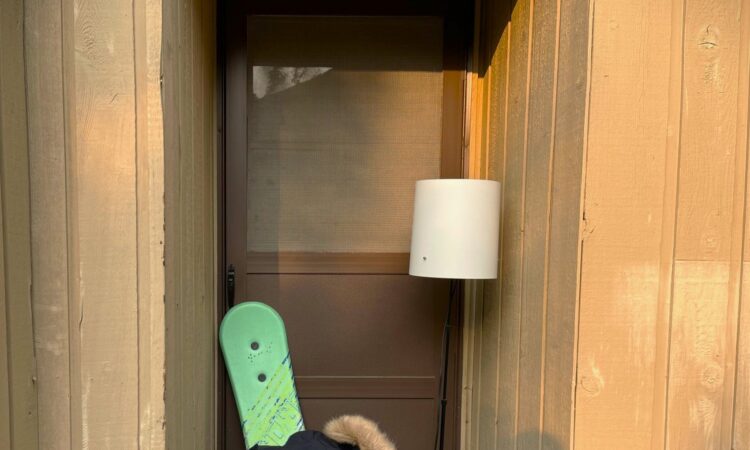
I have acquired many new experiences and habits during my nearly year-long stay in the United States to complete my master’s program at the University of Michigan-Ann Arbor. I adapted to walking on the right side of the street, holding doors open for people walking behind me, greeting the strangers that I meet, tipping when dining and even learning to endure frigid temperatures. However, if I were asked about the most compelling new experience of my time here, I have no hesitation in answering: the Buy Nothing movement.
I first heard about the Buy Nothing movement from an Indonesian friend that had been living in America for a long time. They showed me the free items they’d gotten through Buy Nothing, ranging from sewing machines to coffee makers to household furniture. Without hesitation, I immediately joined the Buy Nothing Facebook group for the Ann Arbor region. And indeed, in that group, I saw many people offering their belongings to be taken by others who were interested. The Facebook group provided all kinds of stuff, including canned food, clothing, sofas, children’s toys and even iPads.
The items given in the Buy Nothing group are mostly in good condition and are sometimes even brand new. Donors will provide new items for various reasons — the goods may be the wrong size, the owner may have moved to another city or country or the intended recipient of the item is no longer a part of the equation.
These experiences have transformed our local Buy Nothing group into more than just a platform for sharing belongings — it has become a platform for expressing empathy. I vividly remember when Ann Arbor was hit by a storm at the beginning of 2023, causing a power outage that lasted for several days. Online, the group was bustling with people wanting to share food supplies, warm clothing and even offering temporary shelter because the affected area would undoubtedly become very cold without functioning heaters.
For me, the Buy Nothing movement is not only about decluttering; it goes beyond that and can be seen as a practical solution to address economic inequality. While the government should be responsible for alleviating economic inequality, this effort would be more effective if economic agents, including high-income and low-income individuals, were involved. Today, the Buy Nothing movement consists of 7.5 million community members spread across 128 locations worldwide and is almost evenly distributed throughout the entire U.S. — the allure of these groups is already multiplying.
The voluntary willingness of well-off individuals to share and be less materialistic is a fundamental requirement for reducing regional economic inequality. Moreover, it is not uncommon for low-income individuals who have benefited from the generosity of high-income individuals to also pass on this kindness by sharing their own belongings. This contagious compassion is the best way to reconstruct the imbalanced economic system we are currently experiencing.
Although the scale of the Buy Nothing movement may be considered a bit inferior compared to the overall U.S. economy, at the very least, it will improve these small communities’ economic well-being and contribute to a more conducive environment. Research conducted across 33 nations and published in Oxford’s European Journal of Public Health has found that inequality has a devastating impact on social trust among people, opening the door to antisocial and even violent crime. It could be argued that stealing is a form of interpersonal violence provoked by inequality. Another study has indicated a strong and consistent correlation between relative income inequality and burglary rates in the United States.
In addition to addressing inequality and promoting a sense of security, the Buy Nothing movement contributes to environmental sustainability. While circular economy principles are gaining traction worldwide, the United States still struggles with recycling rates. According to recycling rate data from the Environmental Performance Index released by Yale University, in 2022, the United States ranked 105th out of 179 countries with a recycling rate index of 14.80.
Lastly, and perhaps most importantly for international students, the existence of the Buy Nothing movement reduces the negative perception often associated with the United States as a capitalist nation where safety and friendliness may be lacking. Witnessing the spread of kindness among neighbors in the Buy Nothing groups, regardless of race, religion or national origin, has made me realize there are abundant virtues to be learned and shared here. These values serve as invaluable assets for my child and future generations, enabling them to build a more peaceful and deserving society to inhabit in the future.
I hope that many people in Ann Arbor, especially U-M students, will be involved in this movement due to the significant benefits it provides in terms of social, well-being and environmental aspects. It doesn’t have to be luxurious or branded items; even something as simple as a usable snowboard would mean a lot to less privileged children who yearn to play and slide during winter. Well-functioning old lamps would be highly valuable if given to financially disadvantaged new students who need illumination for studying. I have always believed that every human being is born with the innate desire to do good and be of service to others, but sometimes we are unsure how to do it. That’s why the Buy Nothing movement exists.
Muhamad Rifki Maulana is a Public Policy graduate student studying international economic development policy. He can be reached at [email protected].






